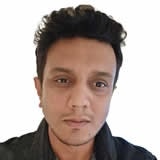Intranasal vaccine shows promise against COVID variants in hamsters
In a recent study published in the journal Science Advances, a group of researchers investigated the immunogenicity and protective effectiveness of intranasally administered messenger Ribonucleic Acid-Lipid Nanoparticle (mRNA-LNP) vaccines against Severe Acute Respiratory Syndrome Coronavirus 2 (SARS-CoV-2) in Syrian golden hamsters. They assessed the induction of specific antibodies, reduction in viral loads, lung pathology, and prevention of weight loss post-infection.
 Study: Intranasal mRNA-LNP vaccination protects hamsters from SARS-CoV-2 infection. Image Credit: TopMicrobialStock / Shutterstock
Study: Intranasal mRNA-LNP vaccination protects hamsters from SARS-CoV-2 infection. Image Credit: TopMicrobialStock / Shutterstock
Background
Respiratory pathogens, prominently highlighted by the COVID-19 pandemic, continue to pose a profound global health threat, necessitating innovative vaccination strategies. The intranasal mRNA-LNP vaccines, which are emerging as pivotal players in this domain, exemplify promising approaches due to their ability to induce systemic and mucosal immune responses and their minimal invasiveness, potentially elevating vaccination rates and adherence. This urgency is intensified by the relentless emergence of new SARS-CoV-2 variants. Further research is imperative to refine these vaccination methodologies, ensuring robust mucosal immunity to effectively counteract respiratory infections and facilitate widespread acceptance and deployment.
About the study
In the present study, female Syrian golden hamsters were intranasally vaccinated with a SARS-CoV-2 vaccine, with doses administered three weeks apart. Control groups received intramuscular vaccines or mock vaccinations. After the vaccine administration, the hamsters were infected with SARS-CoV-2 to monitor the efficacy of the vaccines, and their health was continually assessed. A sequence-optimized mRNA encoding the SARS-CoV-2 spike protein was in vitro synthesized and purified, then LNP-encapsulated for the vaccination. Immunogenicity assessments were also conducted at specified times using specific enzyme-linked immunosorbent assay (ELISA).
In addition to ELISA, SARS-CoV-2 neutralization assays, analysis of viral load by plaque assay, and Quantitative Reverse Transcription Polymerase Chain Reaction (qRT-PCR) were utilized to determine vaccine efficacy and the presence of the virus post-infection. Following standard protocols, histopathological and immunohistochemical analyses were performed on lung samples to evaluate the microscopic damage and presence of specific proteins. Lastly, statistical modeling and hypothesis testing, including Bayesian linear mixed models and the Kruskal-Wallis nonparametric test, were employed to analyze the obtained data, identify significant findings, and validate the results.
Study results
The present study evaluated the immunogenic potential of N1-methyl-pseudouridine–modified mRNA-LNPs administered intranasally, leading to the development of two SARS-CoV-2 vaccines: mRNA-LNP1 and mRNA-LNP2. These encoded a prefusion-stabilized spike protein, tested on Syrian golden hamsters. mRNA-LNP1 had a composition similar to mRNA-1273, with distinct ionizable lipids, while mRNA-LNP2, optimized for respiratory delivery, incorporated a cationic lipid. Hamsters received two vaccine doses or a mock, intranasally, with immunogenicity assessments conducted post-vaccination using tests like ELISA.
The observed results displayed that three weeks after the first dose, both intranasal vaccines elicited high Immunoglobulin G (IgG)-binding titers comparable to intramuscular controls. mRNA-LNP2 showed generally higher titers than mRNA-LNP1 across corresponding dose levels after the second dose. The 25-µg dose of mRNA-LNP2 also induced S-specific serum Immunoglobulin A ( IgA)-binding antibody titers, significantly higher than or comparable to the intramuscular controls. Notably, the neutralizing antibody titers against the emergent omicron variant of SARS-CoV-2 were significantly greater in hamsters vaccinated with mRNA-LNP2, highlighting its potential efficacy against variant strains.
Moreover, three weeks post-second dose, the efficacy of the vaccines was tested against a SARS-CoV-2 challenge, demonstrating lower viral loads in both the lung and nasal turbinates of vaccinated hamsters compared to the mock-vaccinated counterparts. mRNA-LNP2, in particular, illustrated significantly reduced viral loads compared to mRNA-LNP1, particularly at the 25-µg dose level, with no detectable virus in four of five hamsters. By 14 days post-challenge, viral clearance was observed across all groups, indicating effective control of viral replication.
Further investigations into the tissues of the hamsters revealed that, while interstitial inflammation was present in all hamsters 14 days post-infection, all vaccinated groups showed lower severity of pulmonary inflammation irrespective of vaccine group or dose level compared with mock vaccination. Immunohistochemistry studies displayed a lower percentage of SARS-CoV-2 nucleocapsid protein-positive cells in vaccinated groups, suggesting reduced viral presence and replication. Specifically, mRNA-LNP2 at 25 µg showed the least presence of the nucleocapsid protein, indicating superior efficacy in reducing viral presence in lung tissues.
Moreover, an analysis of lung tissue samples revealed decreased macrophage infiltration and activation in mRNA-LNP1 and intramuscular vaccinated hamsters, indicating reduced inflammatory responses compared to mock vaccination. Notably, increased percentages of Cluster of Differentiation 20 (CD20)+ B cells were detected in the lung tissue of mRNA-LNP2 and intramuscular vaccinated hamsters, potentially indicating a robust localized immune response.
Conclusions
To summarize, intranasal vaccine research aims to stimulate local immunity in respiratory sites, offering an initial protective barrier against viral infections like SARS-CoV-2. This methodology has the potential to reduce both infection and transmission of the virus; however, the development of intranasal vaccines is challenging due to the defensive mechanisms of the respiratory tract against pathogens. This research used mRNA-LNP vaccines, administered intranasally to hamsters, to explore their efficacy against SARS-CoV-2, showing promising results in reducing infection levels and disease severity. However, the translation to human applications requires overcoming physiological and technical challenges, warranting further studies and optimizations for intranasal vaccine formulations.
- Gabriela Baldeon Vaca et al. Intranasal mRNA-LNP vaccination protects hamsters from SARS-CoV-2 infection.Sci. Adv.2023, DOI:10.1126/sciadv.adh1655, https://www.science.org/doi/10.1126/sciadv.adh1655
Posted in: Drug Trial News | Medical Research News | Disease/Infection News | Pharmaceutical News
Tags: Antibodies, Antibody, Assay, Coronavirus, covid-19, Efficacy, ELISA, Enzyme, Global Health, Immune Response, immunity, Immunoglobulin, Immunohistochemistry, in vitro, Inflammation, Lipids, Macrophage, Nanoparticle, Omicron, Pandemic, Pathology, Polymerase, Polymerase Chain Reaction, Protein, Research, Respiratory, Ribonucleic Acid, SARS, SARS-CoV-2, Severe Acute Respiratory, Severe Acute Respiratory Syndrome, Spike Protein, Syndrome, Transcription, Translation, Vaccine, Virus, Weight Loss

Written by
Vijay Kumar Malesu
Vijay holds a Ph.D. in Biotechnology and possesses a deep passion for microbiology. His academic journey has allowed him to delve deeper into understanding the intricate world of microorganisms. Through his research and studies, he has gained expertise in various aspects of microbiology, which includes microbial genetics, microbial physiology, and microbial ecology. Vijay has six years of scientific research experience at renowned research institutes such as the Indian Council for Agricultural Research and KIIT University. He has worked on diverse projects in microbiology, biopolymers, and drug delivery. His contributions to these areas have provided him with a comprehensive understanding of the subject matter and the ability to tackle complex research challenges.
